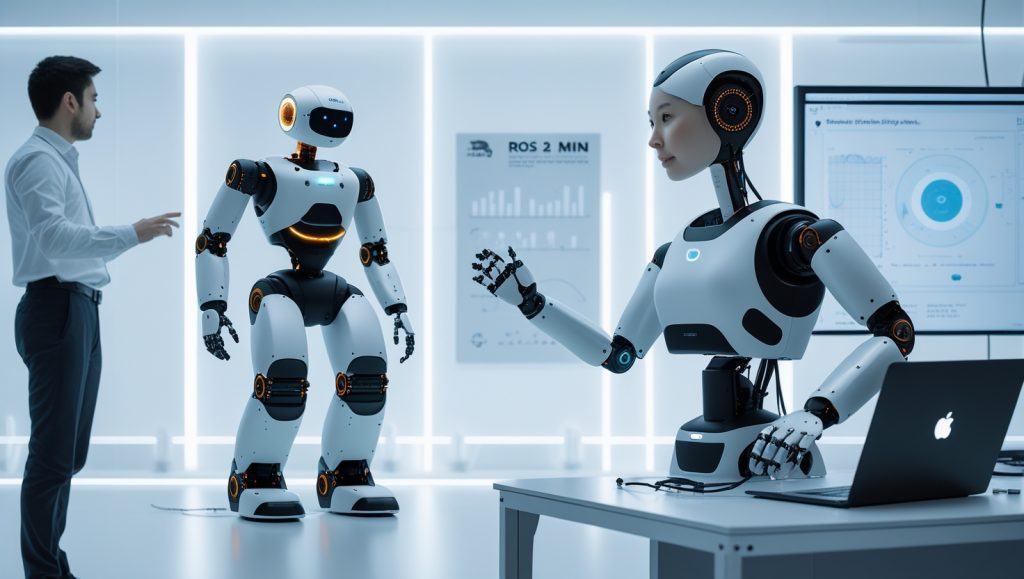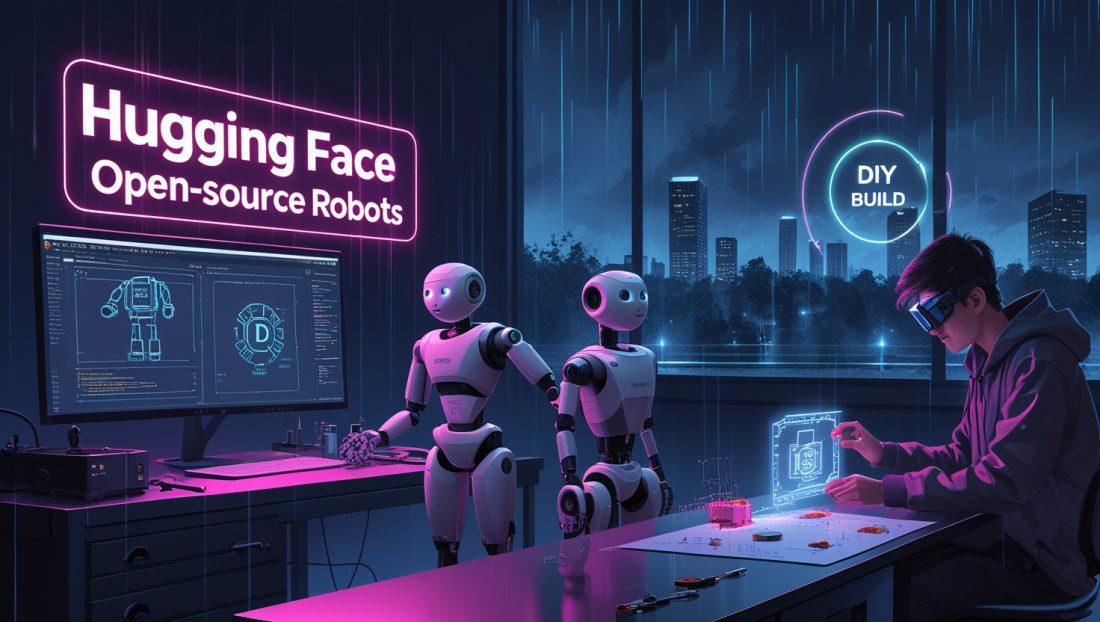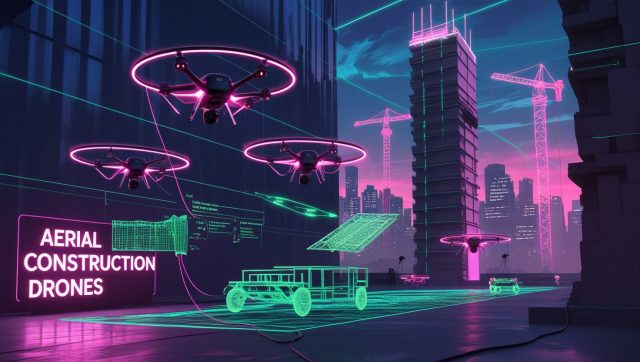Why Robotics Accessibility Matters Now
What if the next breakthrough in assistive technology or climate resilience emerges not from a corporate lab, but a university dorm? This question fuels Hugging Face’s latest move. In May 2025, the AI pioneer unveiled HopeJR and Reachy Mini—open-source robots priced at $3,000 and $250, respectively. These aren’t prototypes; they’re production-ready tools designed to dismantle the financial barriers blocking 87% of academic institutions from robotics research (IEEE, 2024).
Dr. Anika Patel’s experience at Daytona State College exemplifies the crisis: “We had students developing Alzheimer’s companions using VR simulations because actual hardware cost more than our annual department budget.” Her team now uses HopeJR blueprints to build agricultural inspection robots—a project previously deemed impossible. By leveraging open-source robots, her students are tackling real-world challenges like sustainable farming, aligning with global efforts to address climate issues through innovative technology. Explore how robotics is combating climate change.
Engineering Ingenuity: Inside the Designs

HopeJR: The Research Powerhouse
Developed with French industrial designer The Robot Studio, HopeJR’s 66 actuated degrees of freedom enable human-like dexterity. Its modular limbs support third-party sensors, while energy-efficient actuators address the chronic battery limitations plaguing competitors like Unitree’s G1. These open-source robots are redefining research accessibility by allowing customization at a fraction of the cost.
Key Innovation: “We prioritized torque density over raw power,” explains Dr. Élise Bernard, lead mechanical engineer. “Each joint uses customized harmonic drives that reduce heat waste by 40% compared to Tesla’s Optimus actuators.” This efficiency makes HopeJR a game-changer for academic labs exploring advanced robotics applications.
Reachy Mini: The AI Developer’s Sandbox
Born from Hugging Face’s April 2025 acquisition of Pollen Robotics, this desk-sized unit features:
- Retractable “Orbita” neck joints for expressive head movements
- ROS 2-native control system
- NVIDIA GR00T-compatible API ports
At $250, it enables rapid testing of voice agents or computer vision pipelines without financial risk. These open-source robots empower developers to experiment with AI integration in ways previously limited to high-budget labs. For insights into how affordable robotics is shaping industries, read about energy-efficient robotics trends.
How Open-Source Robots Drive Rapid Prototyping
The design philosophy behind open-source robots like Reachy Mini emphasizes flexibility and affordability, enabling developers to iterate quickly. Unlike proprietary systems, which lock users into rigid frameworks, Reachy Mini’s open APIs allow seamless integration with tools like NVIDIA’s GR00T, fostering innovation in fields like healthcare and logistics.
For instance, startups can now prototype service robots for hospitals without multimillion-dollar investments. This democratization is critical as it allows smaller teams to compete with industry giants. Learn more about open-source robotics advancements from IEEE’s robotics research hub (do-follow), which highlights how open architectures are accelerating global innovation.
Feature Comparison:
| Capability | HopeJR | Reachy Mini | Tesla Optimus Gen 2 |
|---|---|---|---|
| Price | $3,000 | $250 | $20,000+ |
| Degrees of Freedom | 66 | 7 (head/arms) | 56 |
| Open-Source Level | Full hardware/software | Software/core APIs | Proprietary |
| Educational Adoption | 120+ universities | 300+ startups | 3 corporate labs |
The Open-Source Advantage in Action
Case Study: Cornell’s Accessibility Revolution
Cornell’s Robotics Lab modified Reachy Mini’s codebase to create SignBot—an ASL interpreter that translates speech into sign language in real-time. Graduate lead Rajiv Mehta notes: “Pollen’s VR teleoperation system let us capture motion data from human interpreters. Two weeks later, we had a working prototype. Closed platforms would’ve required years.” These open-source robots are enabling breakthroughs in accessibility, making assistive technologies more inclusive. Discover how soft robotics is enhancing home safety.
Startup Velocity: NuMind’s Pivot
When Silicon Valley’s NuMind needed to test emotional recognition algorithms for hospital service bots, Reachy Mini’s affordability enabled unprecedented iteration speed. CEO Damian Cole confirms: “We ran 57 hardware trials in one month. With traditional platforms, that would’ve cost $1.7 million. We did it for $14,250.” By using open-source robots, NuMind accelerated development timelines, proving the power of accessible hardware.
Why Open-Source Robots Empower Startups
The affordability of open-source robots like Reachy Mini is a lifeline for startups operating on tight budgets. By providing full access to software and core APIs, these platforms allow companies to pivot quickly, testing applications from emotional intelligence to automated customer service. This flexibility contrasts sharply with proprietary systems, which often stifle innovation due to high costs and restricted access.
For example, NuMind’s success mirrors trends in autonomous delivery systems, where open-source frameworks enable rapid scaling. Read about Switzerland’s autonomous delivery robots for a parallel example, and check Robotics Business Review’s analysis of startup robotics trends (do-follow) for deeper insights into this shift.
Strategic Vision: Why Hugging Face Bet on Hardware

Hugging Face CEO Clem Delangue’s announcement at the 2025 Open Robotics Summit clarified their mission: “AI shouldn’t be physical only for those with capital. True innovation requires democratization.” This aligns with three strategic goals:
- Data Generation: Thousands of globally deployed open-source robots generate diverse real-world training data for their LeRobot ecosystem.
- Talent Pipeline: Students trained on affordable platforms become future enterprise users.
- Standardization Influence: Open architectures could define industry protocols, marginalizing proprietary systems.
Matthias Lapeyre, co-founder of Pollen Robotics, adds: “Robots are AI’s bridge to the physical world. Delaying that connection delays progress itself.” For a look at how open-source robots are shaping STEM education, see how VEX IQ competitions inspire future engineers.
Why Open-Source Robots Reshape Industry Standards
By releasing open-source robots, Hugging Face is positioning itself to influence global robotics standards. Unlike proprietary systems like Tesla’s Optimus, which lock users into closed ecosystems, open-source platforms encourage community-driven innovation. This approach could lead to universal protocols for robot safety and interoperability, reducing reliance on corporate gatekeepers.
The Open-Source Robotics Alliance (OSRA) is already working toward this, with initiatives to certify community-built modifications. Explore OSRA’s standardization efforts (do-follow) to understand how open-source robots are setting the stage for a decentralized robotics future.
Confronting Practical Challenges
The Assembly Barrier
HopeJR’s DIY approach demands engineering proficiency. MIT’s Open Learning initiative addresses this through free certification courses launching in September 2025. As Dr. Lin Wei notes: “We’re creating tiered curricula—from high school clubs to PhD research.” These open-source robots are supported by accessible education, ensuring broader adoption. Learn how to build your first robot with accessible tools.
Supply Chain Vulnerabilities
With 73% of actuator components sourced from Taiwan, geopolitical instability could disrupt production. Hugging Face’s partnership with Texas-based manufacturer FlexBot aims to relocate 60% of production stateside by 2026. This move strengthens the supply chain for open-source robots, ensuring long-term accessibility.
Mitigating Supply Chain Risks for Open-Source Robots
Geopolitical tensions pose a significant challenge to the production of open-source robots, particularly with critical components like actuators. Hugging Face’s proactive shift to diversify manufacturing through FlexBot demonstrates a commitment to resilience. By decentralizing production, they aim to make open-source robots more accessible to global markets, including emerging economies. This strategy aligns with broader trends in robotics manufacturing, such as zero-gravity robotic manufacturing for space exploration, which also tackles supply chain innovation.
The Road Ahead: Partnerships Scaling Impact

Hugging Face’s collaboration web illustrates their systems-thinking approach:
- NVIDIA: Optimizing GR00T models for Reachy Mini’s edge processors
- The Robot Studio: Co-developing HopeJR’s next-gen tactile sensors
- OSRA (Open-Source Robotics Alliance): Establishing safety certifications for community-built modifications
Upcoming projects include solar-powered HopeJR variants for African agricultural research (University of Nairobi) and underwater exploration kits (Scripps Institution). These open-source robots are paving the way for global innovation, from land to sea. Discover how untethered deep-sea robots are revolutionizing ocean exploration.
Why This Changes Everything
These open-source robots shift power dynamics:
- Academia: Howard University reduced robotics course costs by 92%, tripling enrollment
- Emerging Economies: Brazil’s SENAI Institute now trains technicians using locally assembled Reachy Minis
- Ethical AI: Transparent systems allow bias auditing impossible with black-box robots
As Dr. Patel observes: “My student’s recyclable-sorting robot went from concept to campus deployment in four weeks. That velocity? That’s the revolution.” For more on how robotics is transforming recycling, check out this article on global recycling solutions.
FAQs: Addressing Key Concerns
Can non-engineers operate these systems?
Reachy Mini includes no-code tools for basic behaviors. HopeJR requires robotics fundamentals—MIT’s upcoming courses target this gap.
How sustainable is the $250 price point?
Hugging Face subsidizes Reachy Mini through enterprise LeRobot licenses. Volume production will further reduce costs.
What prevents proprietary companies from copying designs?
Patents cover specific innovations, but the OSS license mandates derivative works remain open.
Are there safety certifications?
OSRA is developing community-driven standards for public deployments (medical/industrial use requires additional compliance).
Join the Movement
Hugging Face’s hardware waitlist opens June 2025, but the open-source revolution starts now:
- Experiment: Access Reachy Mini’s simulation tools on LeRobot Hub
- Learn: Explore Howard University’s agricultural robot blueprints
- Collaborate: Contribute to OSRA’s safety standards initiative
“The next Babbage or Lovelace might be in Bangalore or Nairobi,” says Delangue. “Our job is to hand them the tools.”



